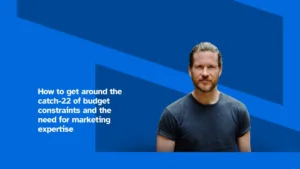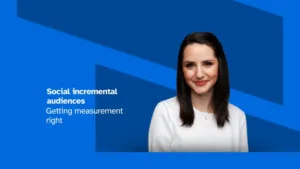Tiffany St James is one of the UK’s most experienced digital transformation specialists, the founder of Transmute and former Head of Public Participation for the UK Government. She is also NDA’s monthly columnist.
Title: In the last crisis team I led, in Gold Command we devised a one-line short statement to underpin the purpose of all our communications.
In any disaster in the public eye, you have media attention. We were facing the largest-ever cross-government departmental collaboration for decades, so you can imagine we had the eyes of the press and all political parties on us.
“What is the digital communication strategy, Tiffany?”
Our one-line statement was ‘To help survivors and people affected by the disaster’. All communication must centre on this.
When politicians, mainly political opponents, were tweeting several times a day about the event driving unnecessary attention to further their political aims, we came under huge pressure to respond. Having the one-line statement and asking the question ‘Does this help the survivors and people affected?’ helped us to say no.
When US pop stars unhelpfully thought to share their opinion and direct us, we again checked in with our strategy, did responding help survivors and people affected by the disaster? Again, no. So, we refused to respond and in hindsight, everyone leading the team believes this was absolutely the right decision. Getting embroiled in politics on an open spat on, at the time Twitter, now X, would have driven us down a path that would have consumed unnecessary resources and focus at a time when the situation was changing every hour.
What can we learn from this for digital transformation? How can we apply this to our work or help our clients in their digital transformation programmes?
Company purpose and mission Statements
One-line statements are not new, they are very common in both purpose and mission statements for businesses and marketing; you’ll be able to name several.
You might not know the name Joe Byerly, but he was the Janitor at NASA who when asked by John F. Kennedy what he was doing, stated that “He was helping to put a man on the moon”, a very clear sense of purpose and how he was contributing.
Apple’s “Think Different.”, Airbnb’s “Belong anywhere.” and Tesla’s “To accelerate the world’s transition to sustainable energy.”, are purpose statements focusing on either the reason for their existence or impact.
Similarly, some brands have consumer-focused short statements that lean more towards mission statements. Walmart has “Save money. Live Better”, which details both what Walmart does (save customers money) and why (to improve customers’ quality of life). As it outlines both the approach and the intended outcome of its business operations, it leans more towards a short consumer mission statement.
Amazon’s “To be the Earth’s most customer-centric company.” is again a mission statement as it states the what and the how. The longer version adds the how, “where customers can find and discover anything they might want to buy online, and endeavours to offer its customers the lowest possible prices.”
Why use project purpose statements?
Despite having a company mission and a programme strategy, it may be hard for people within a change programme to work out how they are contributing to the company mission in their day-to-day work, it might be far removed when they are daily tackling difficult changes.
If you are in the middle of a digital transformation or business agility programme, you’ll likely have some resistance.
Some won’t agree with the strategy, some power base will be threatened, and some people will find change uncomfortable. If you’re unlucky then some people may obfuscate issues and delay your programme.
Designing a short purpose statement for what your team is doing and delivering can help change leaders galvanise towards a certain action.
How to use purpose statements for leverage
Working with a large company in the UK releasing new digital products we looked at how the one-line team purpose could help.
They had processes that needed re-engineering and suspected that some obfuscation was happening where individuals resubmitted issues that seemed to circle and delay the change process.
Recommendations and redesign included tightening the clearance process, issuing more guidance and limiting the number of resubmissions, but also setting a one-line purpose: “New products will take us less than 12 months to release from inception”.
It needed to be ratified at the highest level and for all to agree to be effective, but in all cases, the team could point to “Does this allow us to get a product out the door in 12 months?” If not, we need to change our process.
It’s like a project North Star and having one clearly defined and agreed will allow you to stay on track, true to your mission, with less distractions and more clarity to get the necessary changes delivered on time and cost and most importantly with your team aligned with you.











